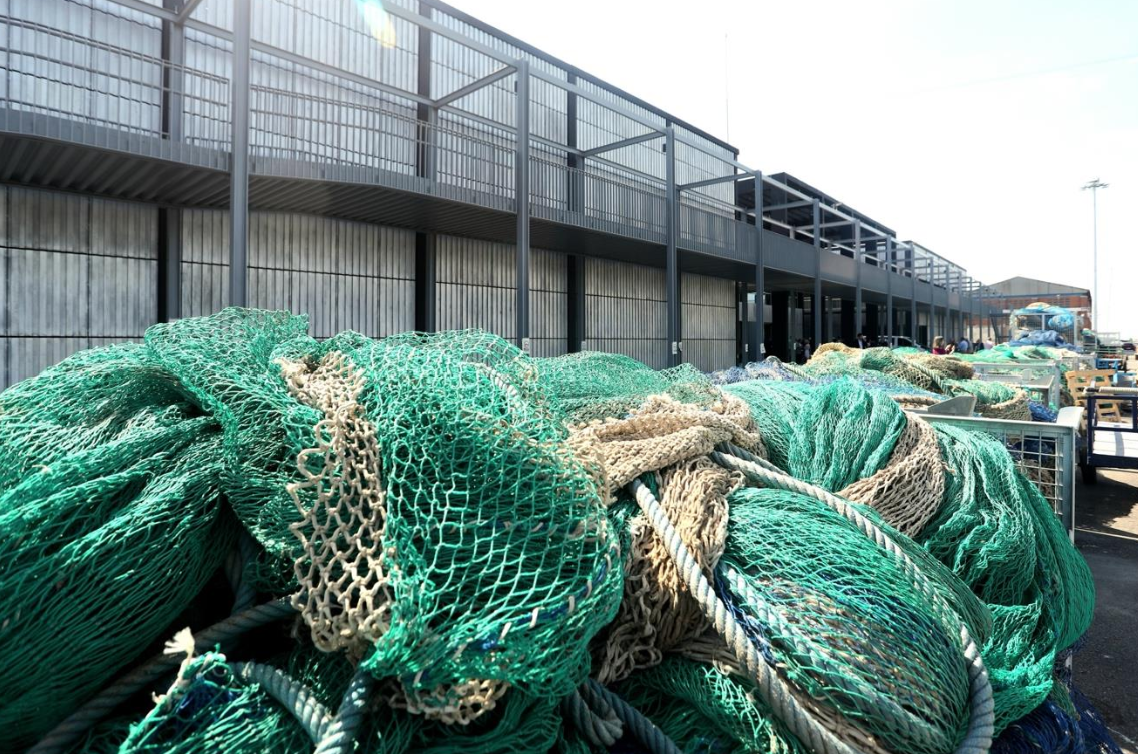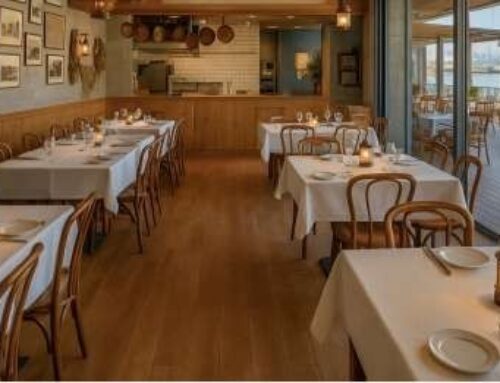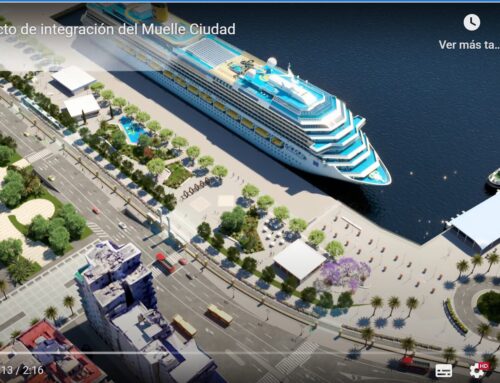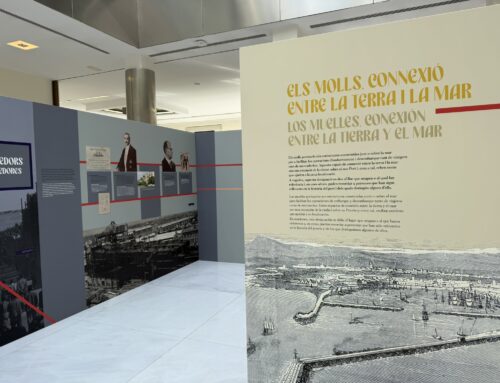The Port of Barcelona today presented the new fishermen’s market, facilities that substantially improve the equipment available to the Barcelona Fishermen’s Guild, while also bringing the work of this group and maritime culture closer to the public. The new building replaces the old market and incorporates spaces for the public to watch the auction of blue fish live, as well as a new quality Mediterranean cuisine restaurant linked to the sea. The new building, built by FCC CONSTRUCCIÓN S.A., has cost nearly 9 million euros and was completed in a year and a half. It is a 3,233 m² building with an exterior ramp of 140 meters that allows differentiated access to the public areas, located on the first floor, which also includes a perimeter terrace offering privileged views of the fishermen’s docking points and the Port Vell in general.
Once the transfer of the Fishermen’s Guild’s equipment to the new building was completed, the demolition of the old market began on May 24th. This is the preliminary step to the redevelopment of the access to the Fishermen’s Pier to allow public entry, which will be possible through a ramp accessible from the vicinity of the Clock Tower, one of the most emblematic elements of the Fishermen’s Pier. The demolition of the old market and the redevelopment of the access are expected to last about four months and will allow the Fishermen’s Pier to open to the public once the America’s Cup celebration ends in October. José Manuel Juárez, head of the Barcelona Fishermen’s Guild, has highlighted the effort of the fishermen and the administrations to agree on a viable future project and has asked the citizens of Barcelona to get to know and differentiate the local product they catch every day and consume it.
The new market and the future opening of the Fishermen’s Pier to the public are one of the major projects promoted by the Port of Barcelona within the framework of the great transformation that the Port Vell is undergoing. “This is a paradigmatic action of the spirit of this transformation, as it combines the opening of new spaces and the improvement of equipment while enhancing the port heritage and contributing to the dissemination of the fishermen’s work,” said the president of the Port of Barcelona, Lluís Salvadó. “We want the new market to bring maritime culture even closer to the public and to consolidate Port Vell as a major social hub of the city thanks to a benchmark gastronomic offer,” he added. The action is part of a set of about twenty actions that the Port of Barcelona, as well as the various concessionaires present in Port Vell, are carrying out with a total investment of 120 million euros, modifying the appearance of the most urban area of the Port of Barcelona and providing it with new spaces and new services for the enjoyment of the people.
The large energy community at the Fishermen’s Pier takes advantage of the surfaces of the existing roofs to install a solar panel system that powers the various facilities at the pier (ice factory, market, etc.). In total, this community can generate 376 MWh annually. It is a shared consumption electricity generation project that will power the compressors that produce the industrial cold for the ice factory with renewable energy, reducing the energy consumption of this facility. One of the great advantages of this new structure is that it will connect the renewable energy generation of solar panels directly with consumers, ensuring the development of fishing activities in Barcelona under criteria of sustainability and competitiveness. This energy community consists of three sets of photovoltaic panels: the first, on the roof of the market, with the capacity to generate 170.5 MWh annually; the second, on the roof of the pergola that provides shade in the net courtyard, with the capacity to generate 161.7 MWh annually, and which is 70% funded by the European Maritime, Fisheries and Aquaculture Fund (EMFAF). This second set is newly installed and pending connection. Finally, the third set is on the huts surrounding the net courtyard with a capacity of 43 MWh annually.






